Facts
- Manufacturer: Commodore Int. / Amiga Technologies GmbH (Escom)
- Type: Home computer
- Released: October 1992
- Discontinued: 1996 (Demise of Escom)
- OS: AmigaOS 3.0-3.1 (Software upgrades for 3.5-3.9)
- CPU: 68EC020 @ ~14 MHz
- Memory: 2 MB – upgradable by further 8 MB internally (256 MB with CPU upgrade) and 4 MB in PCMCIA slot
- Predecessor: Amiga 600
- ROM: 512 KB Kickstart 3.0-3.1
- Chipset: AGA (Advanced Graphics Architecture)
- Palette: 24-bit (16.8 million colors)
- Resolution:: 320×256 to 1504x576i overscan (PAL)
- On-screen colors: Up to 256 colors (262,144 colors in HAM-8 mode)
- Audio: 4 × 8-bit PCM channels (stereo), 28–56 kHz
- Built-in media: 3.5″ floppy drive (880 KB), 2.5″ IDE (ATA) hard drive (optional)
- Expansion slots: 150-pin expansion port (trapdoor), 22-pin clock port, PCMCIA type II slot
Released 1992: The Amiga 1200, or A1200, is Commodore International’s low-end third-generation Amiga computer, while the A4000, A4000EC and A4000T is the high-end third-generation Amiga computers. A1200 was launched on October 21, 1992, at a base price of £399 in the United Kingdom and $599 in the United States. The A1200 was launched a few months after the Amiga 600 using a similar, slimline design that replaced and overlapped the earlier Amiga 500 Plus and Amiga 500. Whereas the A600 used the 16/32-bit Motorola 68000 of earlier Amigas, the A1200 was built around a more powerful variant, a 32 bit Motorola 68020EC. Physically the A1200 is an all-in-one design incorporating the CPU, keyboard, and disk drives (including the option of an internal 2.5″ hard disk drive) in one unit.
After Commodore’s demise in 1994, production of all Amiga’s was layed down. But production of Amiga 1200 was relaunched by Escom in 1995. The new Escom A1200 was priced at £399, and it came bundled with two games, seven applications and AmigaOS 3.1. It has been criticized for being priced 150 pounds higher than what the Commodore variant had been sold for two years prior. The A1200 was finally discontinued in 1996 as the parent company folded as well.
The A1200 got a number of advantages over earlier low-end Amiga models. It has 32-bit hardware architecture, the 68EC020 CPU is faster than the 68000 and it has 2 MB of RAM built-in. The AGA chipset used in the A1200 is a significant improvement. AGA increases the color palette from 4096 colors to 16.8 million with up to 256 on-screen colors in normal screenmodes, and an improved HAM mode allowing 262,144 on-screen colors. The graphics hardware also features improved sprite capacity and faster graphics performance mainly due to faster video memory. Additionally, compared to its predecessor A600, it offers greater expansion possibilities.
My Amiga 1200, repair and upgrades
I got my Amiga 1200 in a lot with other computes. It was very dirty with rat droppings into the keyboard and so on. The trap door lid and the power supply was missing as well. Some of the keys like SHIFT and AMIGA didn’t worked either. On the bright side, this is an original Commodore manufactured unit and not one of the later Escom produced one. First thing was to take it apart and clean inside and out.
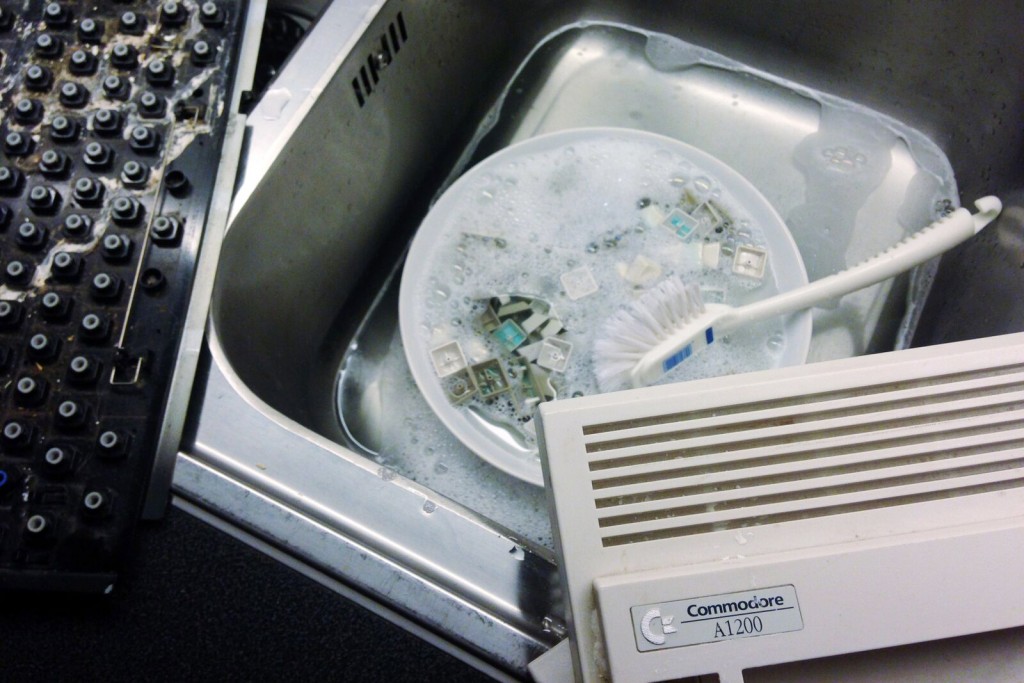
Replacing the keyboard
Next, I took the keyboard apart, and found out there was corroded traces on the keyboard membrane that caused the fault. I got a second hand keyboard from eBay and replaced it. I Cleaned the floppy drive reader head carefully with a q-tip and some alcohol. I swapped some other Amiga parts I had laying around to get a power supply and the missing trap door lid. I now had a complete working Amiga 1200.
Setting up a memory card as hard drive
I installed an 8 GB CF memory card using an IDE-CF adapter for internal hard drive. I also got an CF memory card reader for the PCMCIA port. A installed drivers and setup mount list for using a “FAT32” PC formatted CF card in the PCMCIA port. I struggled many hours with this and it turned out the 4 GB CF card I had bought for this, was not compatible with my PCMCIA CF-card reader. Luckily I had another older 4 GB CF card laying around, and it then worked out flawless. This FAT32 formatted CD-card for the external reader is very handy for transferring files from my modern PC. Later I also got a WIFI-adapter for the PCMCIA port to get the Amiga 1200 “online”.
Replacing the capacitors
Even it was running stable and fine, I brought it to (retroservice.no), and got all the electrolytic capacitors replaced “a recap” and the main board was at the same time checked in a digital microscope for electrolyte leakages from the capacitors. The main board uses SMD (Surface Mound Devices) capacitors and these are known to leak and make problems with age.
Getting an accelerator (CPU upgrade)
I got hold of an 68030/50 MHz CPU card (accelerator) for the internal trap-door expansion slot, the card is also populated with 64 MB of Fast RAM (CPU RAM). Adding an accelerator card was and still is a very popular upgrade, and makes a huge difference in performance, making the Amiga 1200 twice as fast as an Amiga 4000/030 (but still half the speed of the original Amiga 4000 with 25 MHz 68040 CPU.
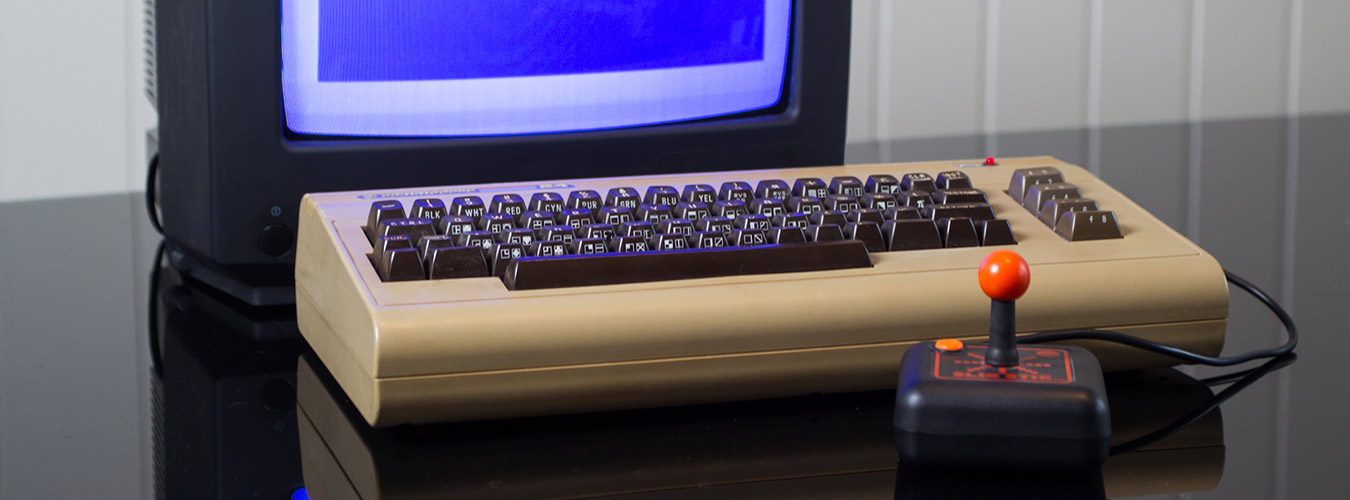

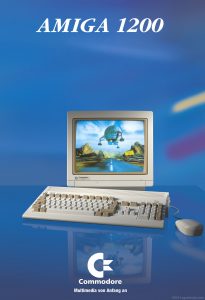
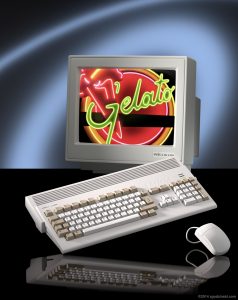
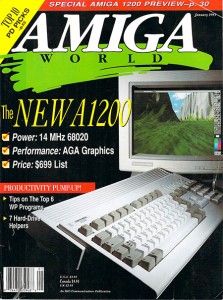
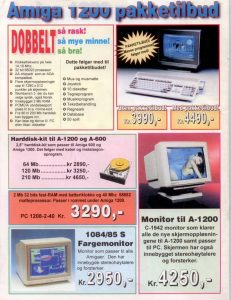

2 thoughts on “Amiga 1200”